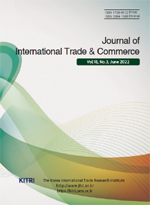학술논문
Effects of Trait Dominance on Social Rank Achievement in the Workplace
이용수 17
- 영문명
- Effects of Trait Dominance on Social Rank Achievement in the Workplace
- 발행기관
- 한국무역연구원
- 저자명
- Hye-Jung Yoon
- 간행물 정보
- 『무역연구』제19권 제1호, 211~224쪽, 전체 14쪽
- 주제분류
- 경제경영 > 무역학
- 파일형태
- 발행일자
- 2023.02.28

국문 초록
영문 초록
Purpose – The purpose of this paper is to identify, explore, and provide the underlying mechanisms for an individual’s trait dominance leading to a high social standing within a group. Design/Methodology/Approach – Based on status characteristics theory, implicit theories, and social exchange theory, this study posits that informal leadership is the main mediator in the relationship between trait dominance and social rank enhancement. This study also argues that the relationship between trait dominance and perceived informal leadership diminishes when trait dominance is not accompanied by a corresponding level of competence. It also argues that the positive association between trait dominance and perceived informal leadership is amplified when the group feels a sense of urgency. Using a survey-based study with 270 employee–peer pairs, this study tested hypotheses using a series of hierarchical regressions. Findings – This paper studies and empirically finds the indirect mediating effect of informal leadership connecting trait dominance to social rank. Moreover, the moderating effect of sense of urgency is found as statistically significant. That is, when group members perceive that the group encounters uncertain or even risky situations, they appreciate the value of trait dominance possessed by informal leaders. Research Implications – In the management of this paper, this study sheds light on the inconsistent effects of dominance on social rank by providing an alternative pathway. The current theoretical and empirical research framework emphasizes that individuals with trait dominance are perceived to be leadership material regardless of their official title as they possess and convey various leadership-signaling cues.
목차
Ⅰ. Introduction
Ⅱ. Literature Review and Hypothesis Development
Ⅲ. Methods
Ⅳ. Results
Ⅴ. Conclusion
References
해당간행물 수록 논문
참고문헌
최근 이용한 논문
교보eBook 첫 방문을 환영 합니다!

신규가입 혜택 지급이 완료 되었습니다.
바로 사용 가능한 교보e캐시 1,000원 (유효기간 7일)
지금 바로 교보eBook의 다양한 콘텐츠를 이용해 보세요!


